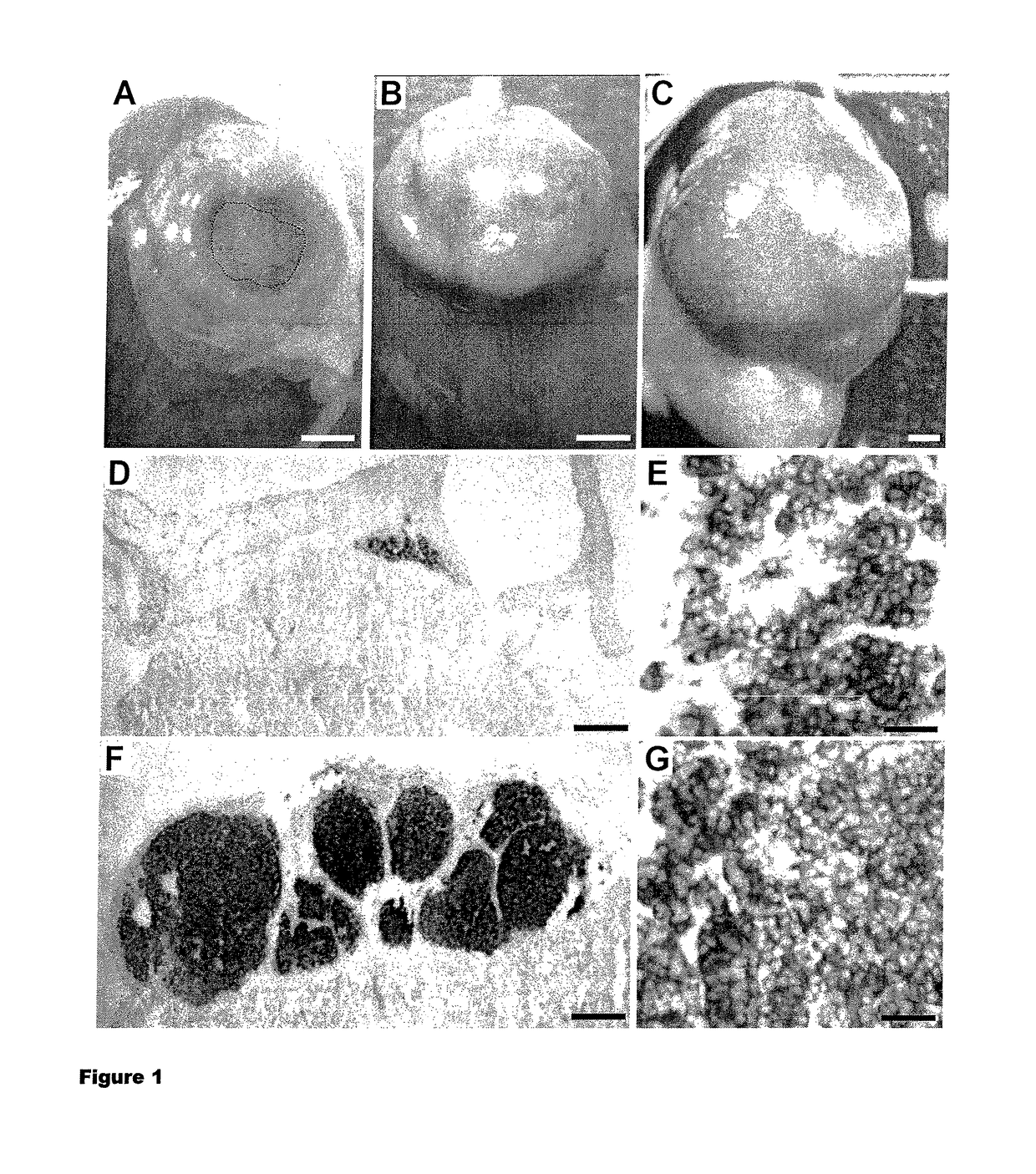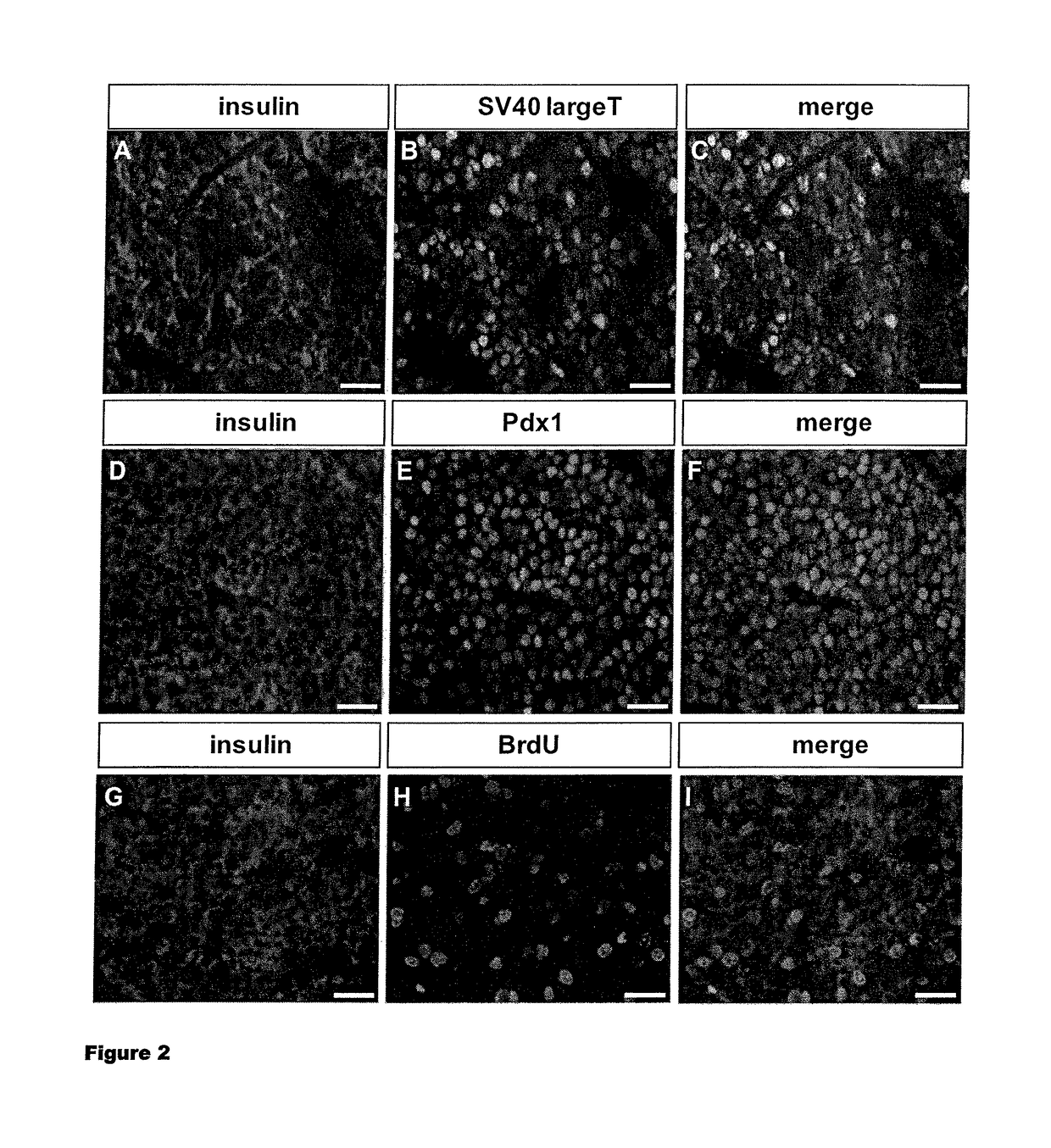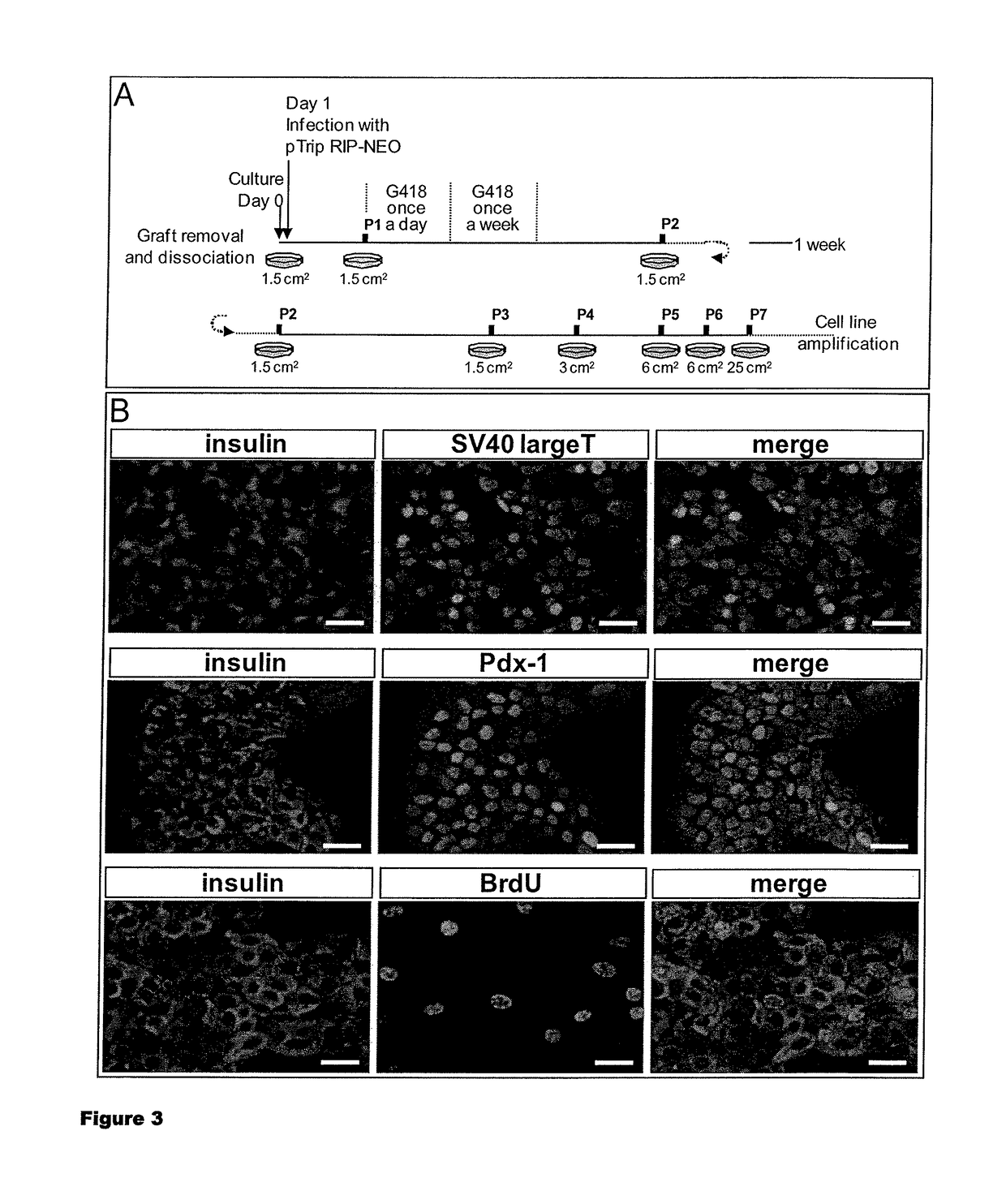Human pancreatic beta cell lines for diagnostic of diabetes
a technology of pancreatic beta cells and human pancreas, which is applied in the direction of vector-based foreign material introduction, cell culture supports/coatings, immobilised enzymes, etc., can solve the problem that the efficiency of the approach is extremely low, the method is not amenable to obtaining large-scale mature beta cells for diagnosis or therapy, and the function of beta cells is not sufficient to control glycemia
- Summary
- Abstract
- Description
- Claims
- Application Information
AI Technical Summary
Benefits of technology
Problems solved by technology
Method used
Image
Examples
example 2
ment of Rat Pancreatic Beta Cell Lines
[0118]To establish pancreatic Beta cell lines, grafts were removed, dissociated and further infected with viruses expressing the neomycin resistance gene under the control of the insulin promoter. This allowed a further selection of insulin-transcribing cells by culture in the presence of G418. The protocol is described in detail in FIG. 3A. Using this approach, different cell lines were established and one of them, RYAS41 was further analyzed. As shown in FIG. 3B, RYAS41 cells expressed insulin and SV40 Large T antigen. They also the nuclear transcription factor Pdx1 and proliferate, based on their capacity to incorporate BrdU. We next analyzed the stage of differentiation of RYAS41 cells. For that purpose, we performed comparisons between RYAS41 cells and pancreas or lung at E17. We first analyzed the expression of Ngn3 and Pax4 2 transcription factors expressed in pancreatic progenitor cells (Apelqvist et al., 1999; Sosa-Pineda et al., 1997) ...
example 3
rmation from Human Pancreases Transduced with Recombinant Lentiviruses Expressing Different Transgenes Under the Control of the Insulin Promoter
[0121]We infected human fetal pancreases with recombinant lentiviruses expressing the SV40 LargeT antigen under the control of the insulin promoter. Such tissues were next transplanted under the kidney capsule of immunoincompetent Scid mice. Four to six month after transplantation, the grafted tissues were removed and their development was analyzed. For that purpose, tissues were sectioned and analyzed by immunohistochemistry. Insulin-positive cells had developed from infected pancreas as previously shown for uninfected pancreases (Castaing et al., 2001), forming islet-like structures (FIG. 4A, E). In such tissues, 2 types of islet-like structures could be found. Some islets contained cells expressing SV40 LargeT antigen, others stained negative for this marker (FIG. 4B, F). Interestingly expression of SV40 LargeT antigen was exclusively fou...
example 4
ing Human Fetal Pancreases to Generate Beta Cell Tumors
[0125]We first infected human fetal pancreases with lentiviruses expressing SV40 LargeT antigen under the control of the insulin promoter. After 10-12 months, pancreases that had developed insulinoma-like structures were micro-dissected, dissociated and infected with lentiviruses expressing hTert under the control of the insulin promoter and sub-transplanted to new scid mice. We found that under such conditions, after 6 additional months, insulinoma-like structures had developed. Interestingly, under such conditions, the whole graft contained insulin-positive cells that were proliferating (FIG. 5). Acinar cells staining positive for carboxypeptidase A were not detected in such sub-grafts. Taken together, this indicates that this sub-graft approach can be used to successively infect pancreatic tissues. Moreover, it is extremely useful to enrich the tissue in Beta cells and to produce an homogeneous population of Beta cells. Final...
PUM
| Property | Measurement | Unit |
|---|---|---|
| volume | aaaaa | aaaaa |
| concentration | aaaaa | aaaaa |
| volume | aaaaa | aaaaa |
Abstract
Description
Claims
Application Information
 Login to View More
Login to View More - R&D
- Intellectual Property
- Life Sciences
- Materials
- Tech Scout
- Unparalleled Data Quality
- Higher Quality Content
- 60% Fewer Hallucinations
Browse by: Latest US Patents, China's latest patents, Technical Efficacy Thesaurus, Application Domain, Technology Topic, Popular Technical Reports.
© 2025 PatSnap. All rights reserved.Legal|Privacy policy|Modern Slavery Act Transparency Statement|Sitemap|About US| Contact US: help@patsnap.com



